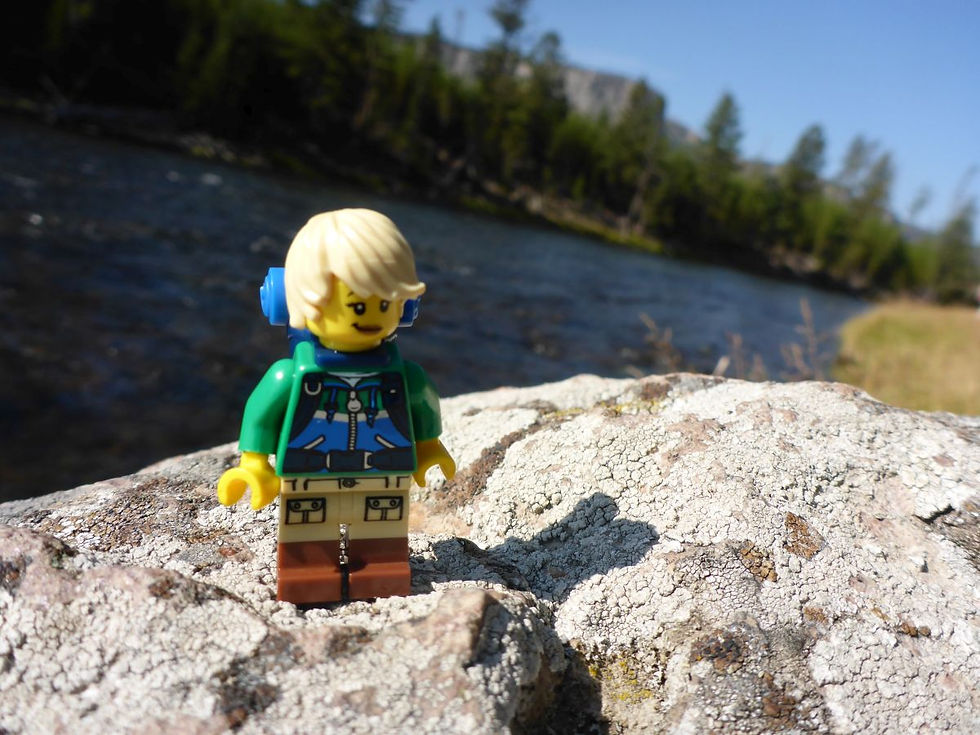
Great American West Adventure
Yellowstone National Park, September 2017
Day 2
Yellowstone is so big that we are spending three days here. You can read about Day 1 here.
We spent the night in the town of West Yellowstone, which as the name indicates is just outside the west entrance of Yellowstone in Montana.
Today, we visited the Midway Geyser Basin, Norris Geyser Basin, Gibbon Falls, the Mammoth Headquarters area, Mammoth Hot Springs.
But first, today is September 11. We paused to remember (Never Forget) those who lost their lives in this tragedy.
Midway Geyser Basin. Rudyard Kipling, who visited Yellowstone in 1889, apparently called the Midway Geyser Basin "Hell's Half Acre." It is small in size but features some very large and very dramatic hot springs.
The star of the Midway Geyser Basin is the Grand Prismatic Spring. This thing doesn't look real. It is the largest hot spring in the United States at 370 feet in diameter and its colors are AMAZING!!! It has bands of orange, yellow, and green that ring deep blue waters in the center. The spring is 121 feet deep. The colors come from heat-loving bacteria that live in the waters of the spring. The bacteria form mats which attach to the sides. The different colors are determined by the temperatures of the water. Cooler around the edges (reds and oranges) and hotter toward the center (yellows and greens). The amount of color in the mats depends on the ratio of chlorophyll (think green leaves) to carotenoids (think carrots or fall leaves) and on the temperature gradient in the runoff. The center of the pool is sterile due to extreme heat. Throughout the year as the atmospheric temperatures change, the colors change, as well.
Also, in this basin are Excelsior Geyser Crater, Opal Pool, and Turquoise Pool. There is a extensive network of wooden walkways that allow you to get up very close to the features.
Fountain Paint Pots Trail. This is a short (0.6 mile) trail that features a large number of geothermal features. It contains all four type of thermal features - geysers, hot springs, mud pots and steam vents. The parking area was a madhouse, but we were able to squeeze in to the bus parking area.
Gibbon Falls. We made a quick stop at Gibbons Falls along the road. The falls are about 84 feet tall and have a gradual descent. The view from the roadside is from above the fall. There were lots of rocky features on the walls of the canyon.
Norris Geyser Basin. The Norris Geyser Basin has dozens of thermal features. Steamboat Geyser is the tallest geyser in the world at 300 feet. It is also completely unpredictable. It last had a major eruption in September 2014. However, it has minor eruptions (10to 40 feet) continuously. We did not see a major eruption today, but it was continuously spouting up. Did I mention that these hot springs put off a lot of sulfur? Stinky!!
Normally, you would travel from the Norris area to the Mammoth area straight up the road on the west side of the park. Unfortunately, that road is undergoing construction so we had to go all the way around the east side over Washburn Mountain. This was a steep and very, very winding road with pretty steep drop offs on the side. Not a fun time for any of us. Not only did it add 50 minutes to the drive, but it was very nerve wracking. In the trip planning, I had hoped to avoid this road completely. We did, however, see a bison right next to the edge of the road. It was so close that I could have touched it (which I did not do).
Mammoth Headquarter Area. As we pulled into this area, there was a group of elk right in the middle of the town square. A buck, a few cows, and some babies. One lone park ranger was trying to keep the curious onlookers a safe distance away. The buck was on high alert and staring down the people and cars that slowed to get a look at them.
Mammoth Hot Springs. The hot springs in the Mammoth area form travertine terraces. They are limestone (calcium carbonate) deposits that form as the waters percolate upwards carrying high amounts of dissolved calcium carbonate. At the surface, carbon dioxide is released and the calcium carbonate is deposited, forming travertine, the chalky white rock of the terraces. They look like a frozen fountain. If you have been in underground caves, these deposits look very similar to those found in some caves.
As we were getting back into the RV, I noticed some cars slowing on the road. There was a very large buck along the side and he then crossed right in the road. Then we noticed that there was a cow and a couple of babies on the other side by the ranger's quarters. Crazy.
As we approached the exit at the North Entrance, it was like Wild Kingdom. Pronghorn and elk all over the place.
We stopped for the night just outside the park's north entrance in Gardiner, Montana. Elevation: 5,259′ Population: 875
Tomorrow, we will tour more of the features in the north and central part of the park including the Grand Canyon of the Yellowstone and then head east.




























































360° Spherical Panorama

Google Maps 3D Image of Middle Geyser Basin

